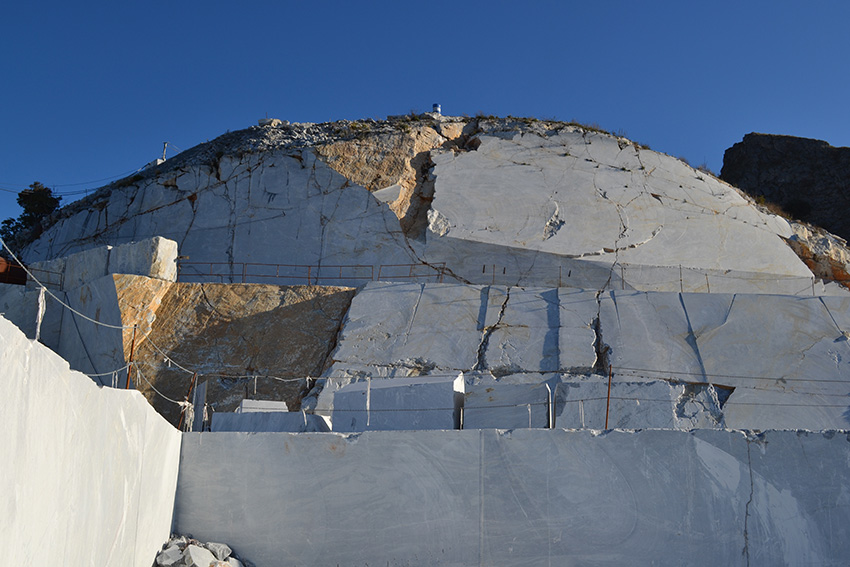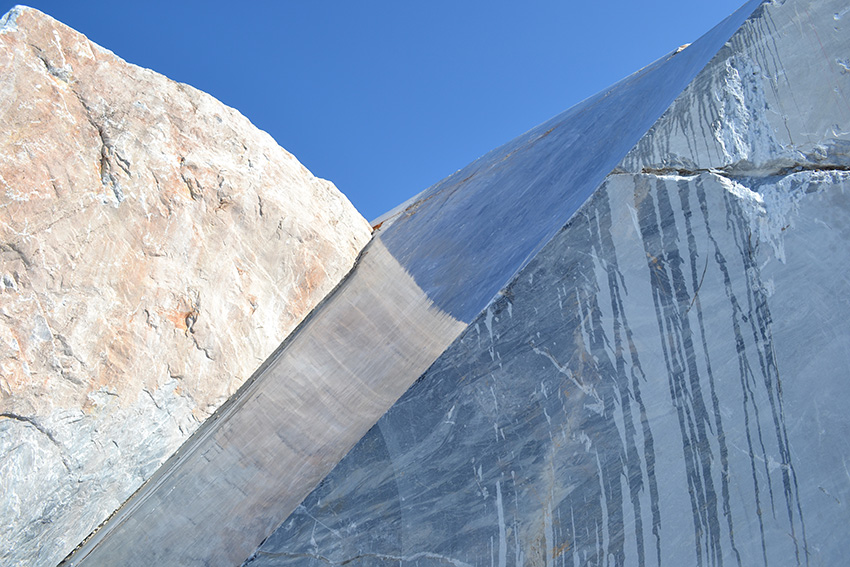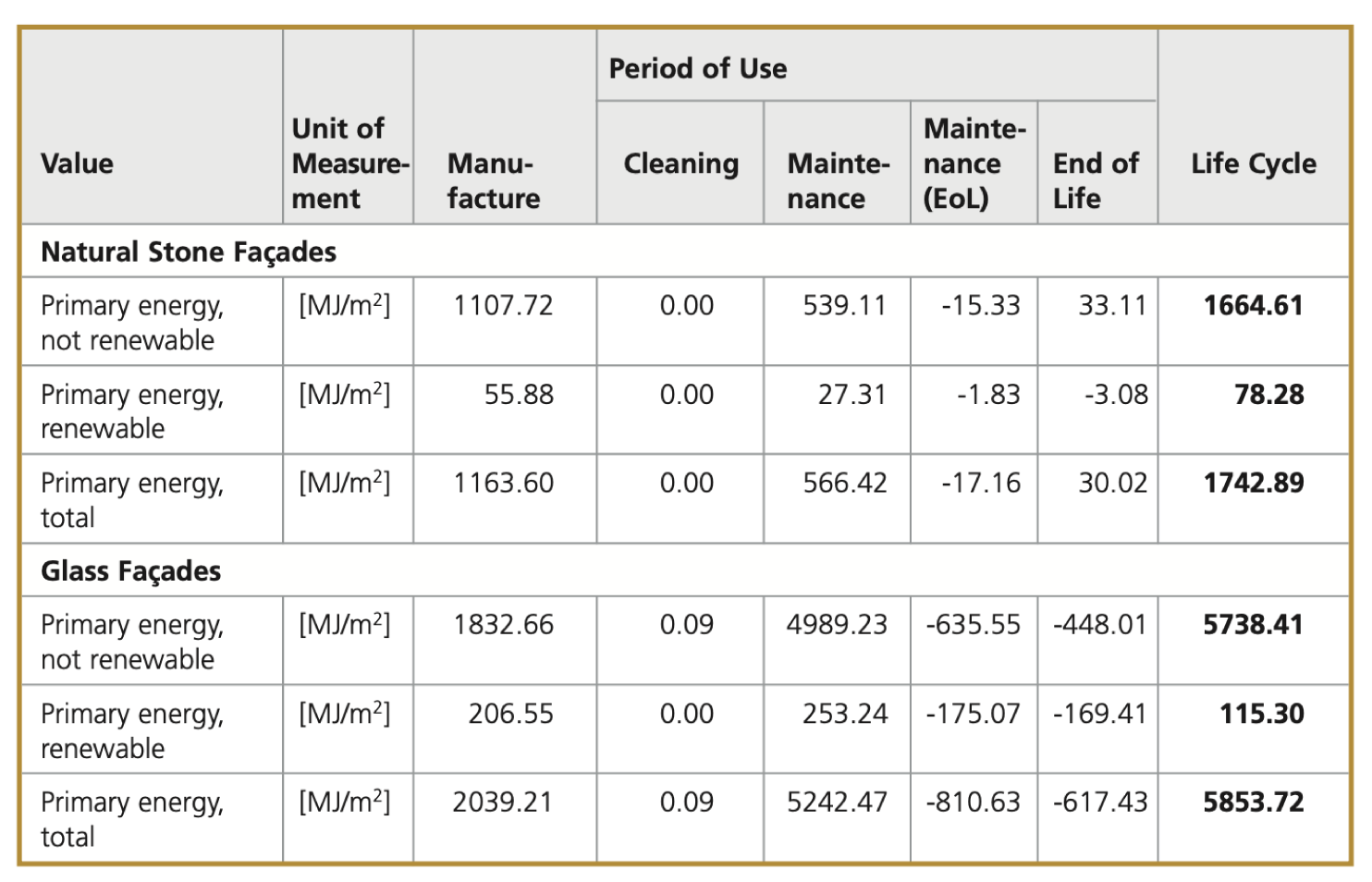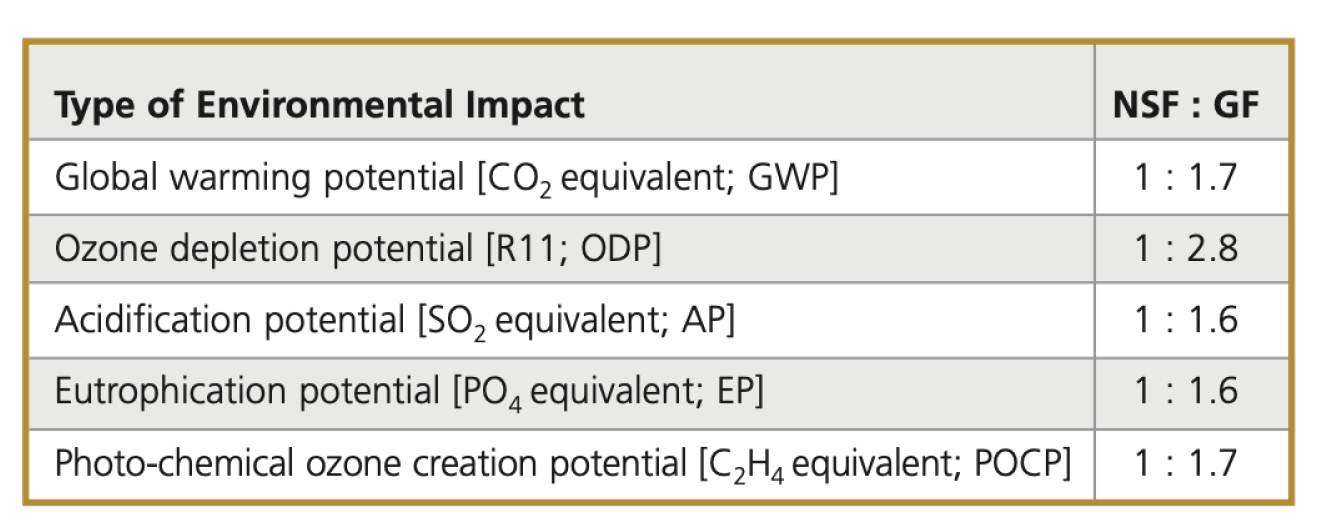Life Cycle Inventory Analysis: Over their life cycle, natural stone façades require significantly less primary energy (1743 MJ/m2) than glass façades (5854 MJ/m2). The share of renewable energy is also proportionately higher in natural stone façades. Notably, during the manufacturing phase, the overall primary energy requirements of natural stone façades are lower than those of glass façades. In the maintenance phase, glass façades use up more than eight times as much primary energy as natural stone façades due to frequent replacement cycles of their components.







